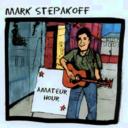  Ad-hoc teams, producer coops quickest way to better freelancers’ lot
 Ad-hoc teams, producer coops quickest way to better freelancers’ lot
I’m still catching up from being out of town last week which makes this my first chance to react to a discussion on TechCrunch about efforts to unionize bloggers. The discussion was provoked by articles such as an (click here) Associated Press account that suggested there is a labor glut in the blogosphere:
“About 11 percent of American Internet users have created Web pages or blogs for others while eight percent have created their own online journals or Weblogs . . . with pages focused on everything from bird watching to celebrity footwear, more than 120,000 blogs are created every day and more than 58,000 new posts are made each hour . . .”
The post drew many dismissive comments but German-born, Los Angeles-based freelancer Janko Roettgers observed in his riposte that a union for work-from-home scribes could begin with subtle but effective moves:
“One example: I’m a member of the German Verdi union that offers freelancers a simple online forum to anonymously post their wages, which proves to be a great tool for negotiations. “
The German example is interesting and I wish the U.S. organizers every success.
That being said, I think the shortest path to increasing one’s labor power is to team up with other people who can add value to your work or vice versa. Put your energy into cooperation rather than confrontation and I suspect more of the output of time and labor will redound to your benefit. (I have written one, two, three postings on how a producer’s coop or guild would enable independent operators to combine their efforts to better their circumstances.)
Thanks to Greg Sterling for pointing me to the TechCrunch post and the ensuing discussion. He keeps a blog on the search engine space at Screenwork.com.
 If you didn’t stop to scan it earlier, the AP article is quite good. Here is another chance to click through to it.
  Amy Gahran says all-female panels like this are rare at tech/media conferences
 Amy Gahran says all-female panels like this are rare at tech/media conferences


